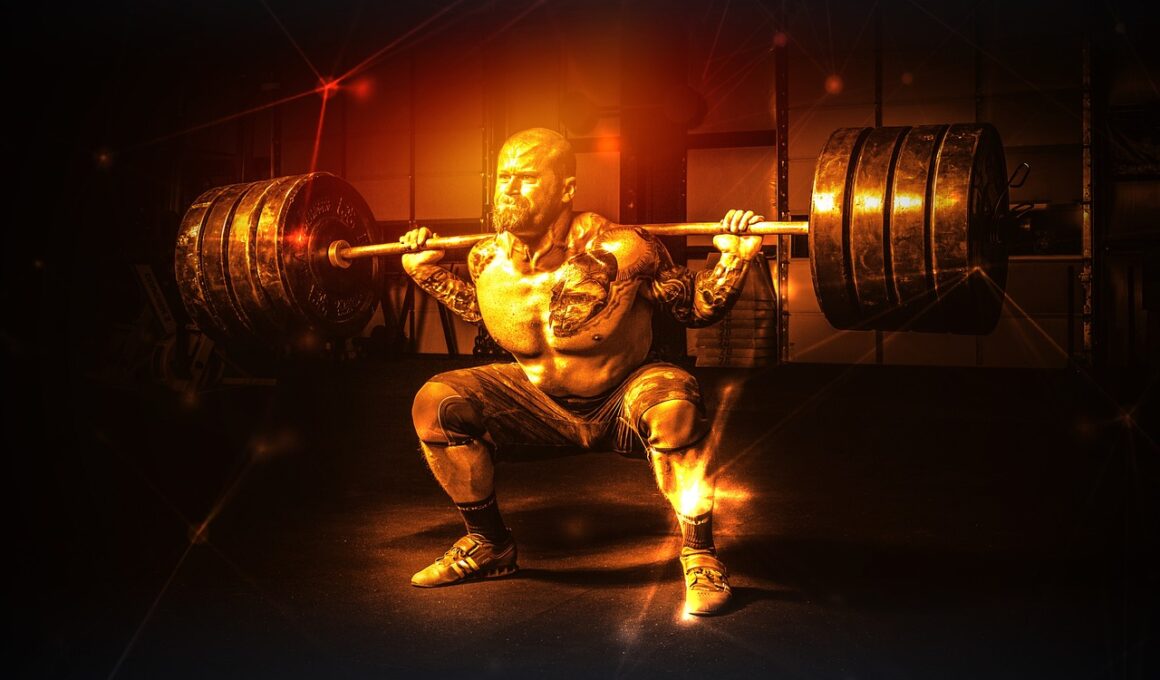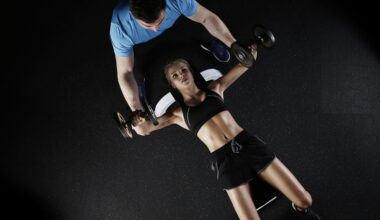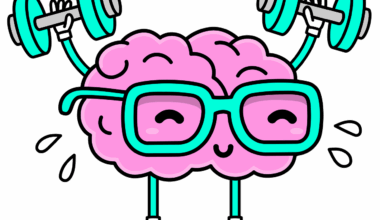Role of Coaches in Transitioning Weightlifters to Powerlifting Techniques
The transition from weightlifting to powerlifting involves numerous technical adaptations. Coaches play a pivotal role in this process by tailoring training programs to develop strength in the squat, bench press, and deadlift. These lifts require different biomechanical movements compared to Olympic lifts, thus necessitating specific approaches in coaching. Firstly, coaches must assess the weightlifter’s strengths and weaknesses. By understanding the athlete’s current capacity, individualized plans can be devised. Techniques like progressive overload are essential for muscle growth and adaptation to the new lifting styles. Furthermore, attention to form is crucial. A coach can help modify the weightlifter’s technique to ensure optimal efficiency and minimize injury risks. Adjustments in stance, grip width, and bar path can drastically affect performance. Regular feedback during training sessions aids in correcting any undesirable habits early in the transition. Coaches should also create a supportive environment. Emotional encouragement, motivation, and positive reinforcement boost the athlete’s morale and confidence when adapting to these new demands. Ultimately, the coach’s guidance is the cornerstone of successful transitioning to powerlifting techniques.
Establishing new training methodologies requires effective communication between the coach and the athlete. Coaches must educate weightlifters about the differences in energy system demands between Olympic weightlifting and powerlifting. Each requires various muscle fibers and energy tools, all essential for performance. Implementing specific drills tailored to strengthen movements is critical. For instance, utilizing paused squats and deficit deadlifts can help enhance strength in key powerlifting lifts. Equally important is the emphasis on recovery. A coach must stress recovery protocols that focus on muscle repair, hydration, and nutrition to support the athlete’s transition. Creating periodized training schedules helps maintain optimal performance levels and avoid burnout. Beyond the physical, understanding the mental aspects of the sport is critical. The psychological readiness of a weightlifter transitioning to powerlifting shouldn’t be overlooked. Reflecting on goal setting, visualization techniques, and competition preparation can help in acclimatizing the athlete mentally to their new discipline. Coaches should implement psychological strategies into training, enhancing mental resilience vital for lifting heavier weights. In summary, successful transitioning relies heavily on the collaborative effort between coaches and athletes, focusing on physical, technical, and mental aspects.
Adapting Training Techniques
Effective powerlifting training requires adaptation. Coaches must implement varied training techniques that emphasize strength and stability while navigating the challenges of transitioning from weightlifting. High-intensity interval training (HIIT) reduces metabolic fatigue while promoting muscle strength, which is particularly beneficial for weightlifters new to powerlifting. Coaches should introduce these techniques gradually. Adding auxiliary exercises targeting specific muscles, such as leg presses or tricep extensions, enables athletes to balance the powerlifting component without compromising their weightlifting roots. Nutrition plays a significant role in the transition as well, with coaches providing guidance on adjusting caloric intake. A well-structured nutritional plan can enhance energy levels necessary for high-output powerlifting sessions. Additionally, focusing on bar speed and lift forms is vital. A coach can utilize video analysis to visually demonstrate the differences between the weightlifting and powerlifting techniques. Regular assessments through competitions and mock meets will further aid in noting progress and enhancing performance. Coaches must also be mindful of the psychological aspect. Weightlifters may experience a dip in confidence during this transition, so maintaining open dialogue and reassurance amidst challenges remains essential for success in powerlifting.
Moving on to the technical aspects, transitioning athletes need to learn proper powerlifting techniques to perform the lifts efficiently. This involves a detailed understanding of the biomechanics involved in each lift. Coaches play a key role in breaking down the squat into stages. They can teach athletes the importance of hip hinging, knee tracking, and adequate depth to maximize the lift’s effectiveness. Just as in the squat, coaching for the bench press is about refining posture and grip. Coaches must instruct on shoulder positioning, ensuring optimal force output through proper alignment. Deadlifting mechanics also require attention; the coach must emphasize the importance of maintaining a neutral spine and a strong setup to activate the posterior chain effectively. Adapting these technical aspects is fundamental during the transition; ensuring the transition is comprehensive helps minimize the risk of injury while maximizing performance. Alongside the technical coaching, developing a supportive atmosphere encourages confidence. Communication remains key. Coaches should encourage athletes to voice concerns over their performance. This helps solidify trust, enabling athletes to approach new techniques with an open mind, overall boosting their chance for success in powerlifting.
Analyzing Performance and Progress
Analyzing performance is a vital aspect of effective coaching during the transition process. Coaches utilize various metrics to assess strength and technical proficiency in the weightlifter as they shift to powerlifting. Regular evaluations, both through informal practices and formal competitions, allow coaches to identify specific areas needing improvement. Gathering data from lifts helps in determining athletes’ progress and readiness for competition. It is crucial for coaches to set performance benchmarks throughout the training phase. These benchmarks will guide the athlete in setting realistic and attainable goals. Metrics can include one-rep max (1RM), lifting speed, and the athlete’s perceived exertion during training. It’s important for coaches to regularly revisit adjusted performance goals; as the athlete becomes more proficient in powerlifting techniques, the targets must evolve as well. This progressive assessment ensures personal standards continue to improve whilst training. Moreover, coaches should facilitate ongoing conversations discussing results, helping athletes understand their development. Engaging athletes with constructive criticism and positive feedback fosters improvement. Coaches’ role extends continuously; providing motivation during this stage is critical, particularly when athletes encounter challenges with their new powerlifting routines.
Coaches must also emphasize the significance of competition preparation when transitioning weightlifters to powerlifting. Competitions represent a unique aspect of powerlifting culture, and athletes must learn to adapt to the competitive environment effectively. Preparing for these events often involves creating simulated conditions to familiarize athletes with the pressures of a competition setting. Coaches should carry out mock competitions that simulate every aspect of the contest, including weigh-ins and proper warm-ups. Furthermore, managing the athlete’s emotional readiness is vital. Coaches can work with athletes to frame competitions as growth opportunities rather than barriers. Preparing mentally reduces anxiety and builds confidence, essential for optimal performance. Strategies such as visualization practices can enhance mental toughness leading up to the event. In addition, coaches must also help athletes establish a pre-lift routine. Rituals like breathing techniques and physical warm-up sequences can offer psychological stability. Coaches can also assist in strategizing attempts and weight selection to ensure the athlete aims for personal bests that align with their current performance levels while avoiding unnecessary risks. In all dimensions, the coach’s support remains critical, ensuring athletes have every chance for success during their transition to powerlifting.
In Summary
In conclusion, coaches play a fundamental role in transitioning weightlifters to powerlifting techniques. Their expertise in developing tailored training programs, addressing physiological and psychological aspects fosters successful adaptation. As weightlifters navigate the shift to powerlifting, they benefit from support systems and strategic guidance throughout their journey. Coaches must prioritize effective communication to facilitate understanding of the differences between both disciplines. Introducing suitable training methods and maintaining consistency in performance assessments ensures athletes remain on track while growing in capability. Fundamental coaching elements like technique refinement and performance analysis provide athletes with the tools necessary for achieving greatness in their newfound sport. Moreover, fostering mental readiness helps bolster athletes’ confidence and belief in their abilities, which is critical during challenging transitions. Ultimately, the combined focus on physical, technical, and psychological preparation creates an environment where weightlifters can thrive as they take on the demands of powerlifting. Through dedicated coaching, the transition is not merely about changing techniques; it is about evolving as an athlete. As weightlifters evolve in their training, they gain valuable skills and insights applicable not just to powerlifting, but to their overall athletic endeavors.
This approach encapsulates the multifaceted role of the coach during this transitional period. Coaches are integral in shaping the athlete’s future as a powerlifter, emphasizing continuous development and growth. The successful transition hinges on the collaborative efforts to bolster confidence through constructive feedback and motivation. With supportive coaches, athletes can reflect objectives realistically while maintaining their passion for the sport. Programs designed with a keen understanding of both disciplines facilitate incredible progress, enriching the athlete’s overall journey. Sportsmanship and understanding mutual respect enhance relationships between coach and athlete. Together, they pave the way for significant achievements as they pursue their goals in powerlifting. Learning to balance both training modalities prepares athletes for varied competitions and allows them to tap into their fullest potential. As coaches lay the foundations necessary for skillful powerlifting practices, they cultivate future powerlifting champions, instilling values essential beyond the sport itself. In summary, the role of the coach transcends technical expertise; it involves dedication to nurturing athletes and recognizing that every step taken translates into lifelong lessons in resilience and adaptability. This transition is significant, marking an exciting phase that unlocks a vast potential in the world of powerlifting.


